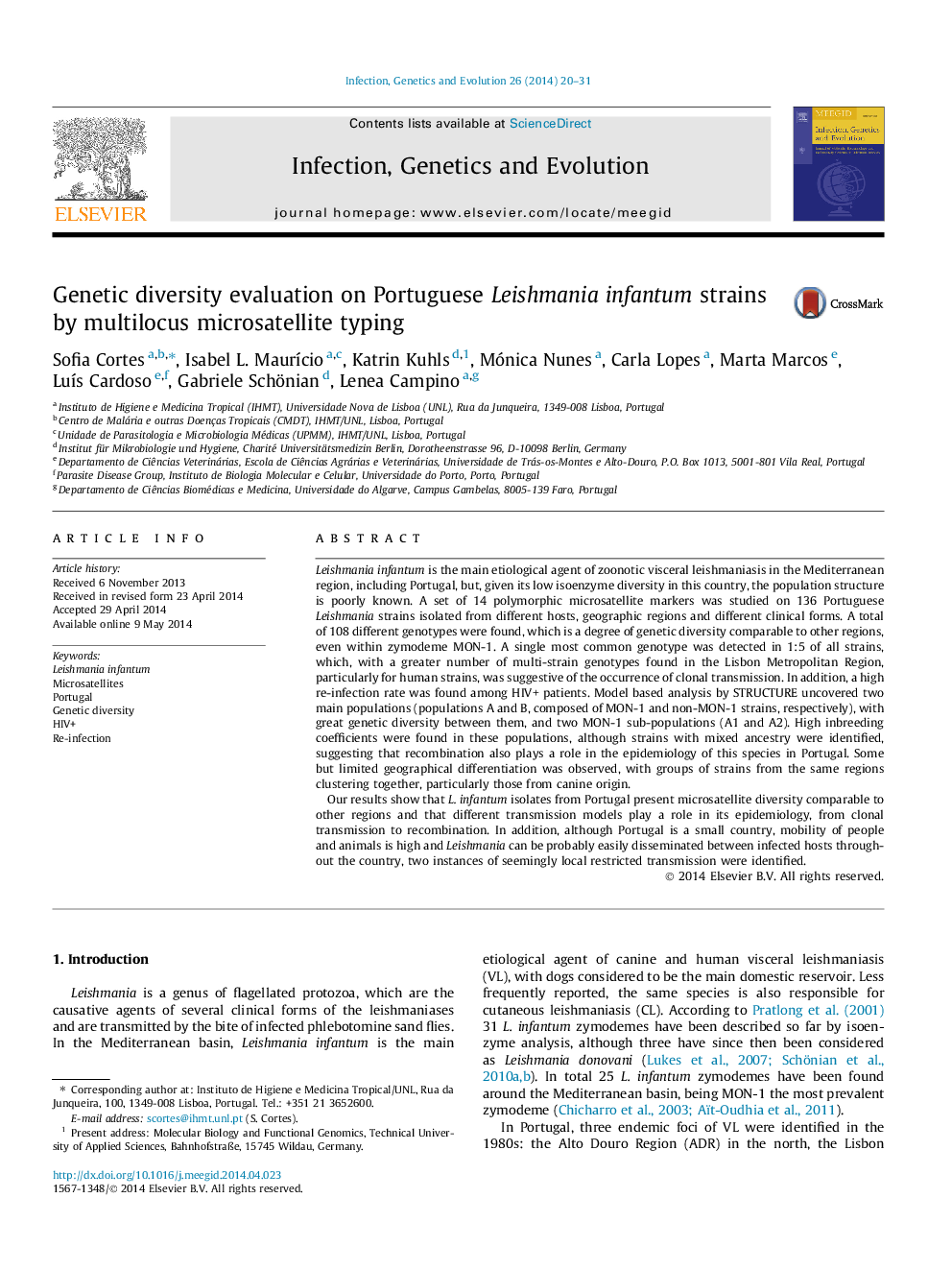| Article ID | Journal | Published Year | Pages | File Type |
|---|---|---|---|---|
| 5909612 | Infection, Genetics and Evolution | 2014 | 12 Pages |
â¢Portuguese Leishmania infantum strains were found to be genetically diverse.â¢Multilocus microsatellite typing discriminates between MON-1 strains.â¢Portuguese strains with zymodemes MON-24 and MON-29 are not monophyletic.â¢Geographical clustering was found in Portuguese L. infantum strains.â¢A high rate of re-infection versus relapse was found among HIV+ patients.
Leishmania infantum is the main etiological agent of zoonotic visceral leishmaniasis in the Mediterranean region, including Portugal, but, given its low isoenzyme diversity in this country, the population structure is poorly known. A set of 14 polymorphic microsatellite markers was studied on 136 Portuguese Leishmania strains isolated from different hosts, geographic regions and different clinical forms. A total of 108 different genotypes were found, which is a degree of genetic diversity comparable to other regions, even within zymodeme MON-1. A single most common genotype was detected in 1:5 of all strains, which, with a greater number of multi-strain genotypes found in the Lisbon Metropolitan Region, particularly for human strains, was suggestive of the occurrence of clonal transmission. In addition, a high re-infection rate was found among HIV+ patients. Model based analysis by STRUCTURE uncovered two main populations (populations A and B, composed of MON-1 and non-MON-1 strains, respectively), with great genetic diversity between them, and two MON-1 sub-populations (A1 and A2). High inbreeding coefficients were found in these populations, although strains with mixed ancestry were identified, suggesting that recombination also plays a role in the epidemiology of this species in Portugal. Some but limited geographical differentiation was observed, with groups of strains from the same regions clustering together, particularly those from canine origin.Our results show that L. infantum isolates from Portugal present microsatellite diversity comparable to other regions and that different transmission models play a role in its epidemiology, from clonal transmission to recombination. In addition, although Portugal is a small country, mobility of people and animals is high and Leishmania can be probably easily disseminated between infected hosts throughout the country, two instances of seemingly local restricted transmission were identified.
